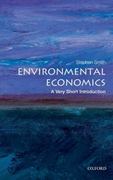Anyone please answer ASAP.
1. Consider a portfolio which consists of two defaultable bonds. The asset values of these companies are described by the Black-Scholes model. The first bond with face value of 100 matures in 10 years, and is issued by Firm 1 whose assets are worth 150 and have an (annual) volatility of 10%. The second bond with face value of 200 matures in 20 years, and is issued by Firm 2 whose assets are worth 250 and have an (annual) volatility of 20%. The correlation between the two firms' assets is 0, and the risk-free rate is 5%. Neither firm pays any dividends. For the purpose of computing the daily Vak below, assume that the mean returns for both firm's assets are zero. Use three decimal places for your answers. (a) [1 point] What is the value of Firm I's equity? (b) [3 points] What is the spread on Firm 2's defaultable bond in %? (c) [1 point] What is the daily 5% VaR for Firm I's defaultable bond? (d) [3 points] What is the daily 5% VaR for the bond portfolio?Kenting Berhad (KB) is a long-established chemical manufacturer in Malaysia. Over the years, share price of KB has performed well. Now, there is concern that KB's profitability and dividends may be significantly affected by the price and cost competition from new entrants into the domestic market. The firm is now considering to expand through the full acquisition of Bukenting Berhad (BB). The acquisition will be financed via a bond issue that will not significantly impact upon KB's existing credit rating and its capital structure. (a) The acquisition is expected to increase the profits of KB by a substantial amount over the next five years. Discuss the reaction of KB's shares assuming Bursa Malaysia is in the form of semi-strong inefficient and strong efficient. Specific to the acquisition of BB, your discussion should include implications for share price to reflect all available information and explanation for any conflict between random walk hypothesis and efficient market hypothesis. (25 marks) O(2) Extemalities (10 pts) Like under Question (I), assume the private demand curve (private marginal utility) for automobile trips is given by P=ZUfU-3Q. The private supply curve (private marginal cost curve) W P stands for the price of gasoline and Q for vehicles miles driven. a) Calculate the private equilibrium b) Now assume the external cost instead of being constantly 50 per unit, it always equals 20% of the private MC. What is the socially optimal quantity? c) What is the DWL of the private solution? d) Assume the city were to impose a Pigou Tax on the supply side. What is the tax ($lunit) at the privately optimal quantity? What is the tax ($lunit) at the socially optimal quantity









